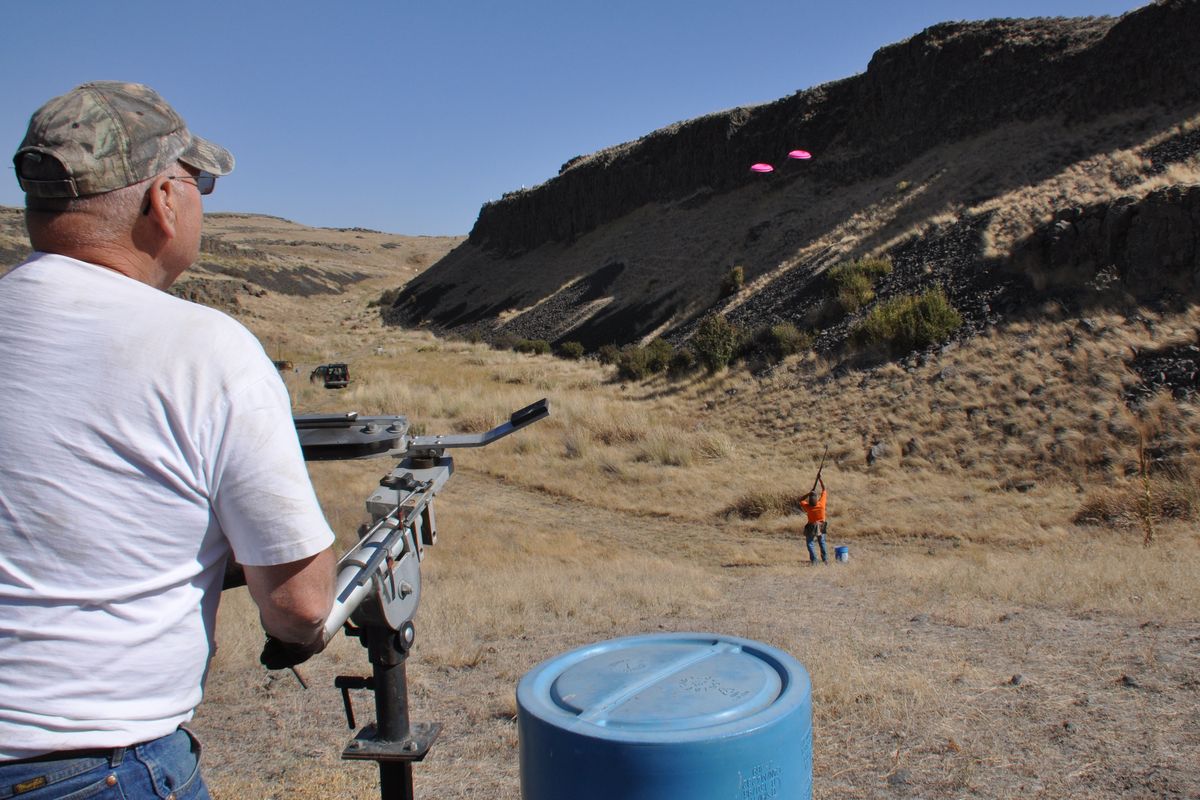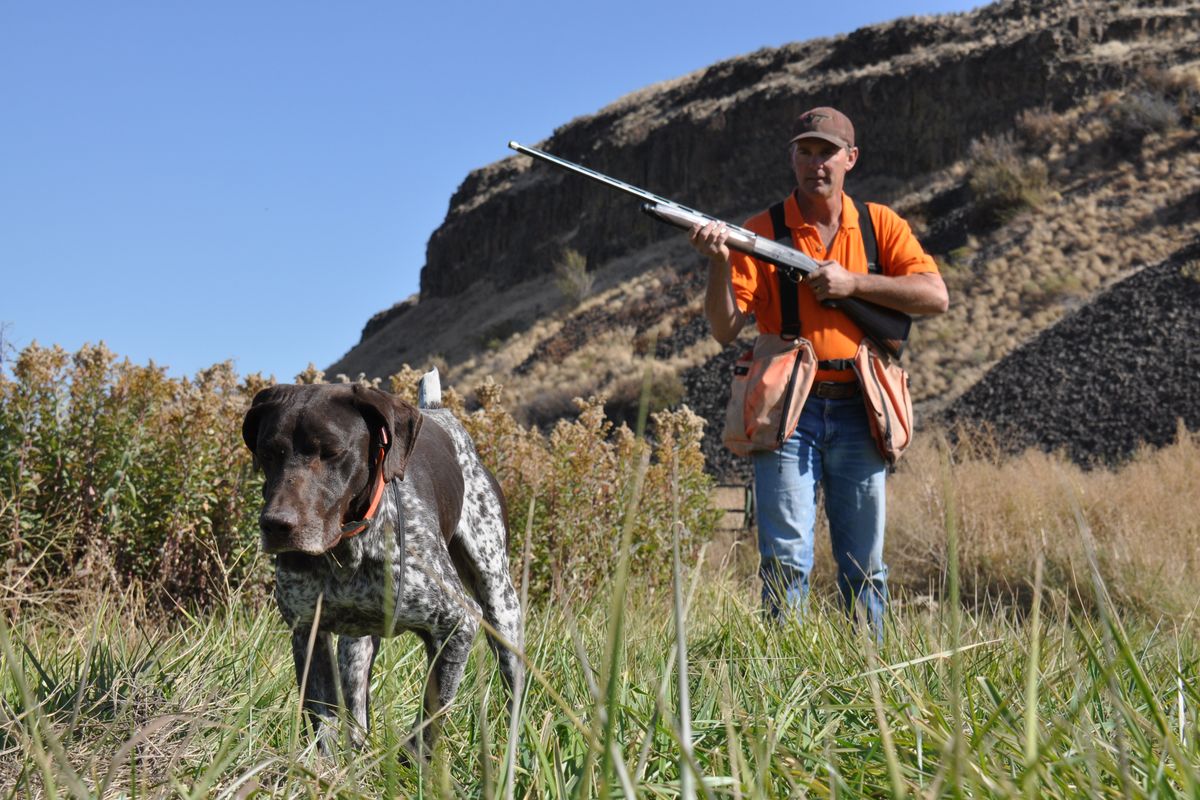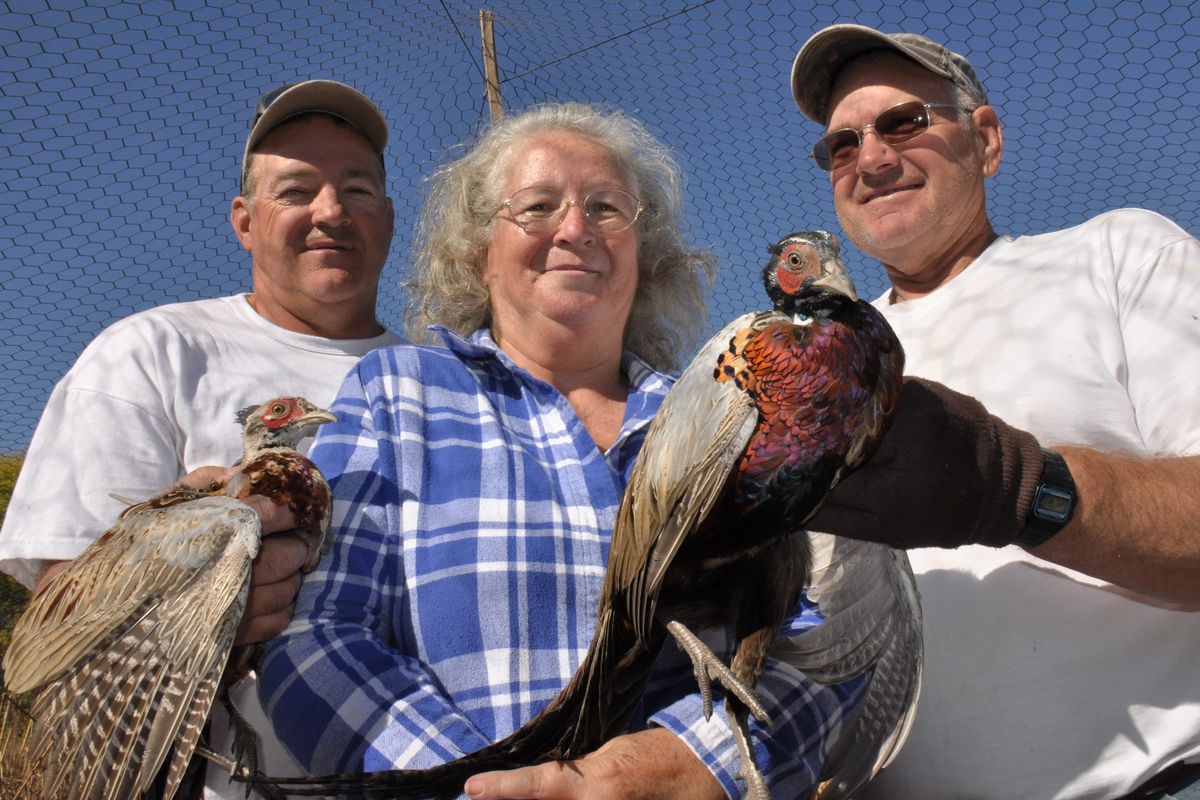Washington’s oldest shooting preserve flush with pheasants
Cheney-area bird-dog trainer Dan Hoke moves in to flush a pen-raised pheasant while hunting with his German shorthair pointer at Pheasant Valley Preserve north of LaCrosse, Wash. The preserve features hunting for ducks and pheasants as well as accommodations and sporting clays shooting on a family farm homesteaded in 1902. (Rich Landers)
Farms along the Palouse River are well-known for producing bumper crops of wild game birds, but for nearly half a century, Pheasant Valley Preserve has taken bird hunting to a different level.
The farm is Washington’s oldest licensed game-bird shooting preserve. While most of the 1,300 acres are devoted to farming or grazing, 400 acres of irrigated river bottomland is seeded with some of the 6,500 pheasants being raised this year in huge netted pens.
Washington’s general pheasant season runs Oct. 20-Jan. 13. At Pheasant Valley – 8 miles north of LaCrosse, Wash., at the end of Wiedrich Road – the hunting season runs from September through April.
Preserve members or clients who book by the day can complement their hunt with a round of sporting clays.
The traps and shooting stations are arranged up a basalt-rimmed side canyon that will challenge any shooter’s skills.
Want to work on that shot you missed last year at chukars flushing down-canyon below your feet?
There’s a station for that.
But whatever you call Pheasant Valley Preserve, it’s first and foremost a Whitman County farm the Wiedrich family is proud to have homesteaded in 1902.
Jack O’Connor lost track of that distinction on his first visit to the shooting preserve, family members say.
The Idaho writer, famous for his Outdoor Life magazine stories and books about hunting and shooting, came along with a Pheasant Valley member around the time the operation became Washington’s first licensed shooting preserve in 1967.
Fay Wiedrich, the farm’s owner, was walking with the group toward the pheasant hunting fields when O’Connor handed him his shotgun, re-tied his bootlace, and then indicated that the farmer should carry his shotgun until they got to where the dogs would find pheasants.
At that time, Wiedrich offered 16 memberships and O’Connor wanted in, Jana Sprague, Wiedrich’s daughter, confirmed this week in front of the homestead house that hunters and clays shooters can rent by the night.
“Some members died or dropped out occasionally, but for Mr. O’Connor, Dad never had an opening,” she said.
One of the most influential men in the hunting was welcome as another member’s guest, but Wiedrich wouldn’t let him become a member.
“Our members are like family,” she said.
The preserve has increased openings for memberships that range from $1,700 to $3,200 a year.
To make ends meet, Pheasant Valley also allows groups to make reservations by the day:
• Sporting clays, $35 per shooter.
• Pheasant hunting, $300 per group.
“We get a lot of father-son groups from Washington State University,” said Terry Cummings, who took over as preserve manager this year following the death of Jerry Townsend, who ran the show for 20 years.
Cummings said he’s working through the learning curve with help from others familiar with the operation.
“It’s always something,” he said. “A mink got in the pens and killed over 200 pheasants.”
He shook his head pointing to one pen where some roosters had their long tail feathers pecked out by other birds. “We clipped all of their beaks to prevent that, but I didn’t realize how quickly the beaks grow back. Way faster than a fingernail.”
Pheasants from the later broods looked fine.
Washington has had dozens of game-bird shooting preserves since Pheasant Valley started the trend, but the economy appears to be having an impact.
Washington Department of Fish and Wildlife officials said the state has only 20 licensed game-bird shooting preserves this year, down from at least 24 just four years ago.
“We could use more members, and there’s always room for non-members to make reservations especially during the week,” he said.
The operators sell batches of birds for state pheasant release sites and to field dog trials. They’re promoting the unique canyon sporting clays range.
“We’re remote, but a lot of people like that, especially the ones who bring their groceries and stay the night in the homestead house,” Cummings said.
“This is a special place, not just for the hunting. People know that when they drop down in the valley, their cell phones won’t work. They like that.”
Contact: Pheasant Valley Preserve, (509) 549-3825, Pheasantvalleypreserve.com.






















